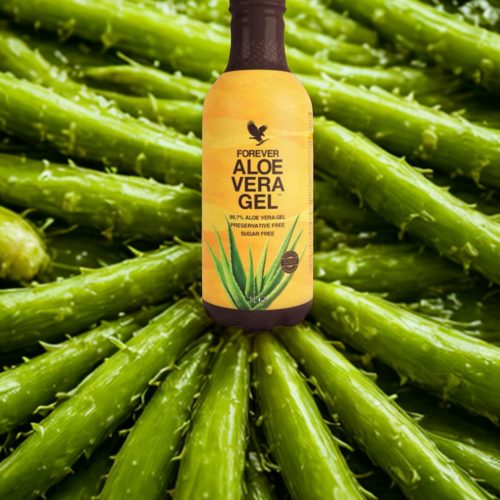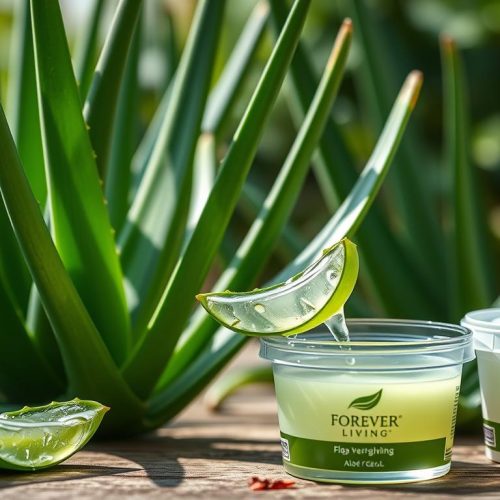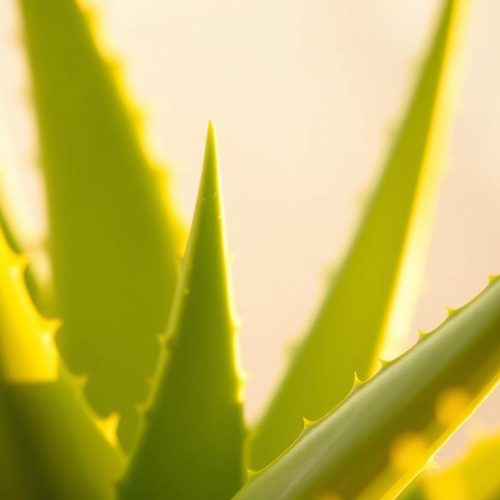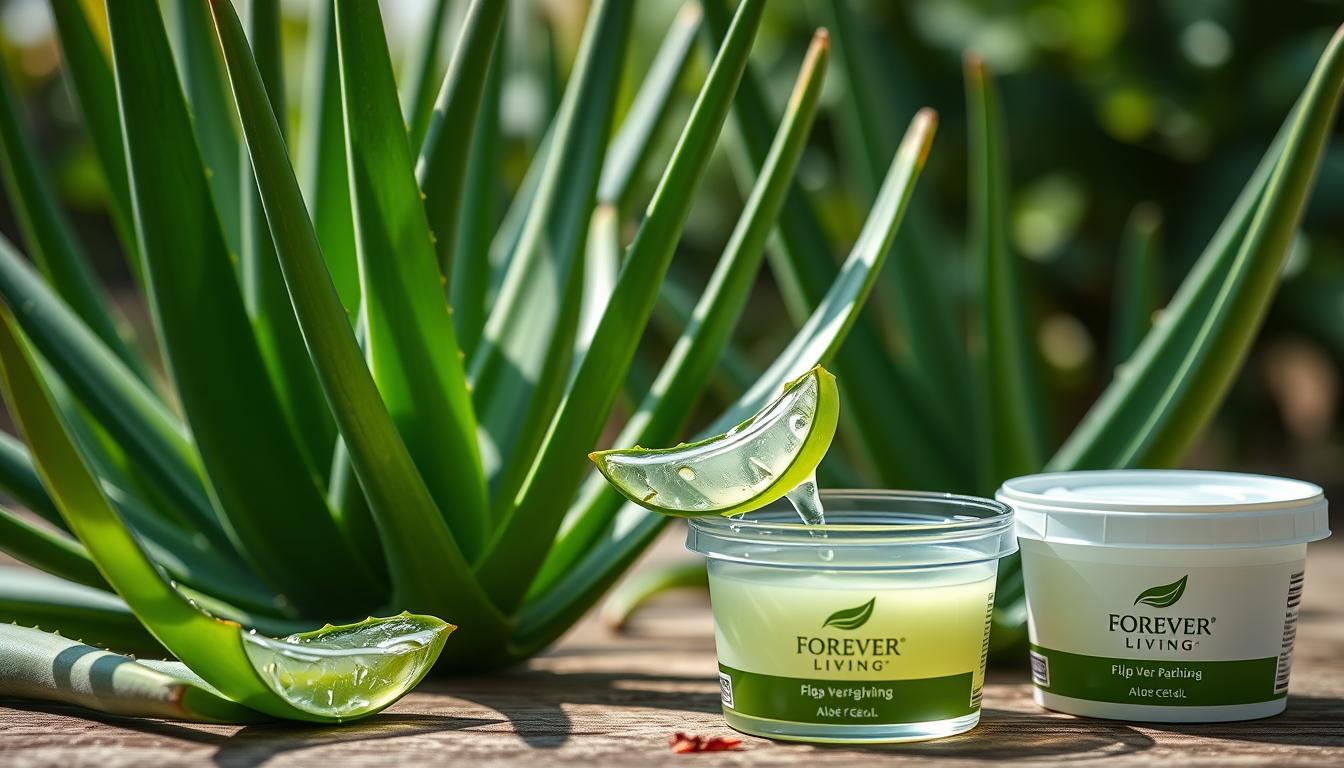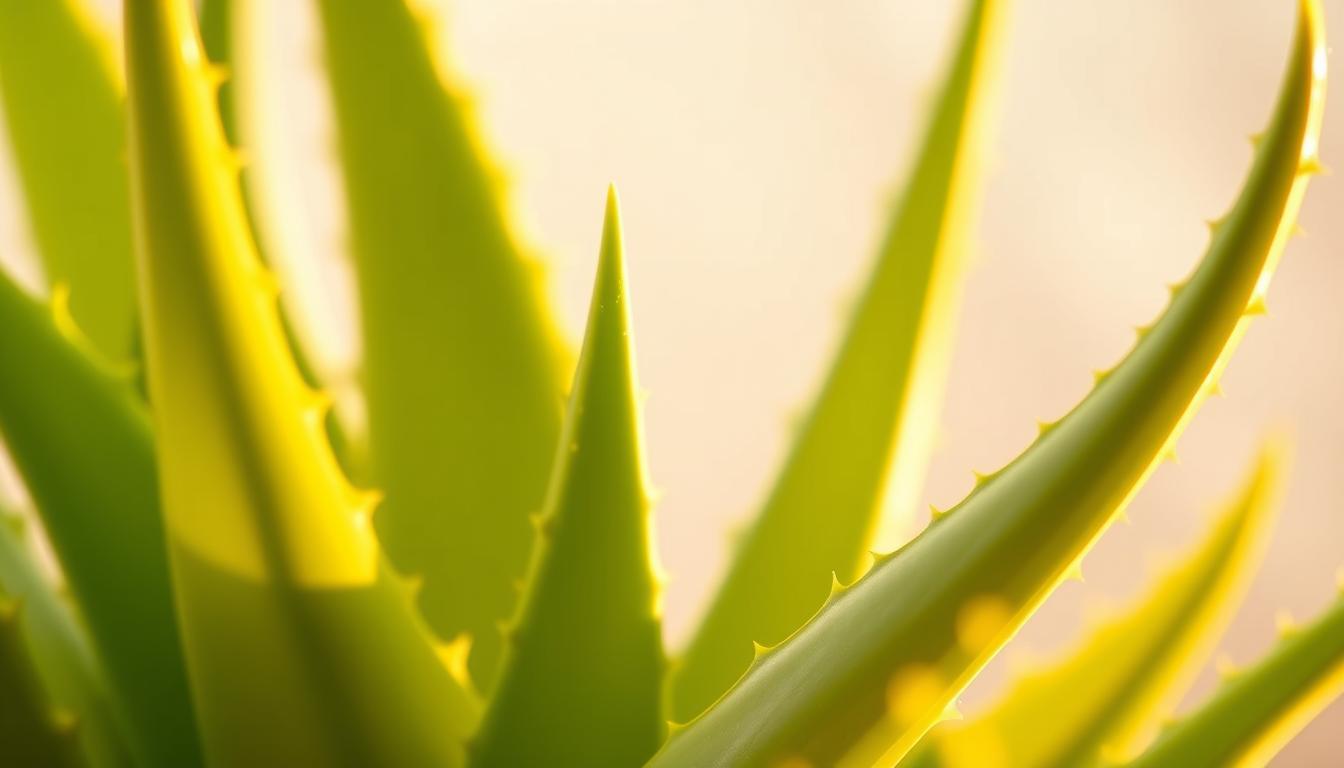Aloe vera is one of the most popular succulents, renowned for its healing properties and low-maintenance care. With over 300 species within the aloe genus, it’s no wonder that many enthusiasts are eager to share and multiply these plants.
Propagating aloe vera is a simple and rewarding process that allows you to share your favorite succulents with friends and family. By using pups or cuttings, you can easily multiply your aloe vera plants and enjoy their numerous benefits.
- Understanding Aloe Vera Propagation Basics
- When Is the Best Time to Propagate Aloe Vera?
- Essential Supplies for Propagation of Aloe Vera
- Identifying and Selecting Healthy Aloe Pups
- Step-by-Step Guide to Propagating Aloe Vera from Pups
- How to Propagate Aloe Vera from Leaf Cuttings
- The Best Soil Mix for Aloe Vera Propagation
- Watering and Light Requirements for Newly Propagated Aloe
- Troubleshooting Common Aloe Propagation Problems
- Caring for Your Aloe Vera After Successful Propagation
- Conclusion
- FAQ
- How do I separate aloe vera pups from the mother plant?
- Can I propagate aloe vera from leaf cuttings?
- What is the best soil for aloe vera propagation?
- How often should I water newly propagated aloe vera?
- What are the ideal light conditions for newly propagated aloe vera?
- Why are my aloe pups not rooting?
- Can I use rooting hormone to help aloe vera propagation?
- When is the best time to propagate aloe vera?
- Understanding Aloe Vera Propagation Basics
- When Is the Best Time to Propagate Aloe Vera?
- Essential Supplies for Propagation of Aloe Vera
- Identifying and Selecting Healthy Aloe Pups
- Step-by-Step Guide to Propagating Aloe Vera from Pups
- How to Propagate Aloe Vera from Leaf Cuttings
- The Best Soil Mix for Aloe Vera Propagation
- Watering and Light Requirements for Newly Propagated Aloe
- Troubleshooting Common Aloe Propagation Problems
- Caring for Your Aloe Vera After Successful Propagation
- Conclusion
- FAQ
- How do I separate aloe vera pups from the mother plant?
- Can I propagate aloe vera from leaf cuttings?
- What is the best soil for aloe vera propagation?
- How often should I water newly propagated aloe vera?
- What are the ideal light conditions for newly propagated aloe vera?
- Why are my aloe pups not rooting?
- Can I use rooting hormone to help aloe vera propagation?
- When is the best time to propagate aloe vera?
Key Takeaways
- Learn the simple steps to propagate aloe vera successfully
- Discover the benefits of multiplying your succulents
- Understand the necessary supplies for aloe vera propagation
- Explore the different methods of propagation using pups or cuttings
- Gain confidence in sharing your favorite succulents with others
Understanding Aloe Vera Propagation Basics
To successfully propagate aloe vera, it’s essential to understand the basics. Aloe vera propagation is a simple and rewarding process that can help you multiply your succulents and share them with friends or expand your own garden.
Why Propagate Your Aloe Plants
Propagating aloe vera plants offers several benefits. It allows you to create new plants without the need for purchasing them, thus saving money. Additionally, propagation can help maintain the health of the parent plant by removing offsets that may be competing for resources.
Moreover, propagating aloe vera is a great way to share plants with friends and family, making it a thoughtful and unique gift for fellow succulent enthusiasts.
Different Methods of Aloe Vera Propagation
There are primarily two methods for propagating aloe vera: using offsets or pups and leaf cuttings. Understanding these methods is crucial for successful propagation.
| Method | Description | Success Rate |
|---|---|---|
| Offsets/Pups | Removing the small plants that grow around the base of the parent plant. | High |
| Leaf Cuttings | Cutting healthy leaves from the parent plant and allowing them to root. | Moderate |
The choice of method depends on the health of the parent plant and the availability of offsets or suitable leaves for cutting.
What to Expect During the Propagation Process
During the propagation process, it’s essential to be patient and monitor the new plants for signs of rooting and growth. Initially, the newly planted offsets or leaf cuttings may not show immediate signs of growth, but with proper care, they should start to develop roots and new leaves within a few weeks.
Understanding the basics of aloe vera propagation, including the different methods and what to expect, can significantly enhance your chances of success. By following the right techniques and providing appropriate care, you can enjoy a thriving collection of aloe vera plants.
When Is the Best Time to Propagate Aloe Vera?
Understanding when to propagate aloe vera is key to multiplying your succulents effectively. The timing of propagation plays a significant role in the success rate of growing new aloe vera plants.
Optimal Seasons for Successful Propagation
The best time to propagate aloe vera is during its active growth phase, which typically occurs in spring or early summer. During this period, the plant is more likely to produce offsets, making it an ideal time for propagation.
Propagating during the spring or early summer also gives the new plants enough time to establish themselves before the onset of winter. This timing is crucial because aloe vera plants are sensitive to frost, and newly propagated plants may not have enough time to develop a robust root system if propagated too late in the season.
Signs Your Aloe Plant Is Ready for Propagation
Before propagating your aloe vera, it’s essential to ensure that it’s ready. Here are some signs to look out for:
- The plant has reached maturity and is producing offsets or “pups” around its base.
- The pups have grown to about one-third to one-half the size of the mother plant.
- The pups have developed their own roots, making them more likely to survive on their own.
Times to Avoid Propagation
While aloe vera can be propagated at various times, there are certain periods when it’s best to avoid doing so. These include:
- Winter months: Aloe vera plants are dormant during winter, making it a challenging time for propagation.
- Extreme weather conditions: Avoid propagating during periods of intense heat or cold, as this can cause stress to the new plants.
- When the plant is under stress: If your aloe vera is suffering from disease, pests, or has been recently repotted, it’s best to wait until it’s recovered before propagating.
Essential Supplies for Propagation of Aloe Vera
To successfully propagate aloe vera, it’s crucial to have the right supplies. Having the correct equipment and materials not only makes the process easier but also significantly increases the chances of successful propagation.
Tools You'll Need
When it comes to propagating aloe vera, the tools you use are just as important as the technique. You’ll need a few basic tools to get started:
- A sharp, clean knife or pair of scissors for cutting or separating the pups from the mother plant.
- A spoon or fork for gently handling the roots or pups.
- Gloves to protect your hands from the sap, which can be irritating to some people’s skin.
Using clean tools is crucial to prevent the spread of disease. Make sure your knife or scissors are sterilized before use, either by wiping them down with alcohol or heating them over a flame.
Soil and Container Requirements
The right soil and container are vital for the successful propagation of aloe vera.
Aloe vera requires well-draining soil to prevent root rot. A cactus or succulent mix is ideal as it is designed to drain excess water quickly.
| Container Type | Size | Drainage |
|---|---|---|
| Small pots | 2-4 inches | Must have drainage holes |
| Trays or propagation kits | Variable | Ensure drainage holes are present |
When it comes to containers, small pots with drainage holes are essential. This ensures that the soil doesn’t become waterlogged, which can lead to root rot.
“The key to successful aloe vera propagation is not just in the cutting or separation, but also in providing the right conditions for the new plant to grow.”
Optional Supplies That Help Success Rates
While not necessary, certain supplies can enhance your chances of successful propagation.
One such supply is rooting hormone. Although aloe vera can root without it, rooting hormone can encourage faster and more robust root development.
Other optional supplies include a watering can with a long spout for precise watering and a propagation tray to keep the new plants organized and under the right conditions.
Identifying and Selecting Healthy Aloe Pups
Aloe vera propagation starts with identifying healthy offshoots, or ‘pups,’ from the mother plant. These pups are essentially the baby plants that grow around the base of the mature aloe vera, and they are crucial for successful propagation.
What Are Aloe Pups and Where to Find Them
Aloe pups are the small plants that develop around the mother aloe vera plant. They can be found at the base of the plant, often connected to the mother plant by a short stem. To identify them, gently remove the plant from its pot and inspect the roots and the area around the base.
Location of Aloe Pups: Typically, aloe pups are found clustered around the mother plant, sometimes attached by a short stem or growing closely together, sharing the same soil.
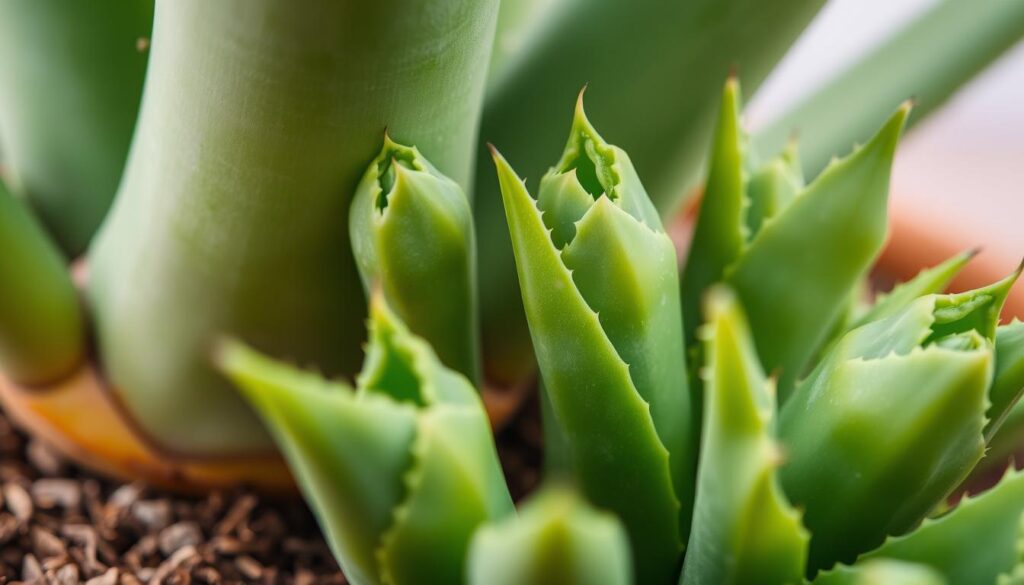
Characteristics of Healthy Offshoots
Healthy aloe pups are typically 3–4 inches tall and have at least 2 leaves. They should have a robust appearance, with leaves that are a vibrant green color, indicating good health.
- Size: 3–4 inches tall
- Number of Leaves: At least 2
- Color: Vibrant green
- Roots: Established roots, but not necessarily extensive
| Characteristic | Healthy Aloe Pup | Unhealthy Aloe Pup |
|---|---|---|
| Size | 3–4 inches tall | Too small or stunted |
| Leaves | At least 2, vibrant green | Fewer than 2, discolored |
| Roots | Established, not too long | Underdeveloped or rotting |
Common Problems to Watch For
When selecting aloe pups, it’s crucial to watch out for signs of unhealthy plants. Common issues include tiny or underdeveloped pups, discoloration, and signs of rot or fungal infections.
Avoid pups that are too small as they may not have established roots or may be too fragile for successful propagation. Similarly, pups with discoloration, such as yellow or brown leaves, may be diseased or stressed.
Step-by-Step Guide to Propagating Aloe Vera from Pups
Aloe vera propagation from pups is a simple and effective way to expand your succulent collection. This method ensures that the new plants retain the characteristics of the parent plant, making it a reliable way to multiply your favorite aloe vera.
Step1: Preparing Your Parent Plant
Before you start propagating, it’s crucial to prepare your parent aloe vera plant. Ensure it’s healthy and robust by checking for any signs of disease or pests. Water the plant a few days prior to propagation to make the soil easier to work with.
Step2: Removing the Pups Safely
To remove the pups, gently dig around the base of the offset with a fork, being careful not to damage the roots. Once loosened, gently twist the pup off the parent plant. If the pup is small, you might need to use a sharp, sterile knife or gardening tool to separate it.
Step3: Preparing Pups for Planting
After removing the pups, allow them to dry out for a few days. This process, called “curing,” helps prevent root rot by allowing the cut ends to callus over. Place the pups on a paper towel or a dry surface, out of direct sunlight.
Step4: Planting the Aloe Pups
Once the pups have callused, they’re ready to be planted. Use a well-draining potting mix designed for cacti and succulents. Plant the pups deep enough so that they’re stable, but not so deep that the leaves are buried. Water sparingly until roots develop.
| Step | Description | Tips |
|---|---|---|
| 1 | Prepare the Parent Plant | Water a few days before propagation |
| 2 | Remove the Pups | Use a fork or sterile knife |
| 3 | Allow Pups to Callus | Dry for a few days |
| 4 | Plant the Pups | Use well-draining soil, water sparingly |
How to Propagate Aloe Vera from Leaf Cuttings
For those interested in multiplying their aloe vera plants, propagation from leaf cuttings is a viable and efficient method. This technique, while not as commonly used as pup propagation, offers a straightforward way to generate new plants.
Selecting the Right Leaves for Propagation
The success of aloe vera propagation from leaf cuttings begins with selecting healthy leaves. Look for leaves that are firm, plump, and free from damage. Avoid leaves that are too old or too young, as they may not root as well. The ideal leaves are typically those that are mature but still vibrant in color.
Proper Cutting Techniques
How to propagate aloe vera from leaf cuttings: You’ll need to cut the leaves correctly. Use a sharp, clean knife or pair of scissors to minimize damage to the leaf and prevent infection. Cut the leaf as close to the base as possible. It’s crucial to make a clean cut to enhance the chances of successful rooting.
Preparing Leaf Cuttings for Rooting
After cutting the aloe vera leaf, it’s essential to let it dry out for a few days. This process, known as callusing, helps prevent rot by allowing the cut end to heal. Place the cuttings in a dry, well-ventilated area away from direct sunlight during this period.
Planting and Caring for Leaf Cuttings
Once the cut ends have callused, you can plant them in a well-draining soil mix. Water sparingly until roots develop, usually within a few weeks. Keep the soil moist but not waterlogged, as this can lead to rot. New aloe vera plants will start to grow from the cuttings, and with proper care, including adequate light and infrequent watering, they will thrive.
By following these steps, you can successfully propagate aloe vera from leaf cuttings, expanding your collection or sharing plants with others. This method, while a bit more challenging than propagating from pups, is a rewarding way to multiply your succulents.
The Best Soil Mix for Aloe Vera Propagation
The right soil mix is crucial for successful aloe vera propagation. Aloe vera plants are susceptible to root rot if the soil is too moist, making well-draining soil a necessity.
Creating the Ideal Drainage Conditions
To create the ideal drainage conditions for your aloe vera, the soil mix should be designed to prevent waterlogging. This can be achieved by mixing ingredients that improve drainage and aeration.
Key components for a well-draining mix include:
- Perlite or pumice to enhance drainage
- Sand to prevent waterlogging
- Compost or well-rotted manure to provide nutrients
DIY Succulent Soil Recipes
Creating your own succulent soil mix can be cost-effective and allows you to tailor the mix to your plants’ specific needs. A simple recipe involves mixing:
A basic DIY recipe:
- 50% potting soil
- 20% perlite or pumice
- 10% sand
- 20% compost or well-rotted manure
Commercial Soil Options for Aloe Propagation
If creating your own mix seems daunting, there are several commercial soil options available that are specifically designed for succulents and cacti. When selecting a commercial mix, look for products that are labeled as “fast-draining” or “succulent and cactus mix.”
Some popular commercial brands include:
- Miraculous-Gro Succulent Mix
- Black Kow All-Purpose Potting Mix with added perlite
- Espoma Organic Cactus Mix
Watering and Light Requirements for Newly Propagated Aloe
The key to healthy growth in newly propagated aloe vera lies in understanding and implementing the correct watering and lighting conditions. Proper care during this stage is crucial for the development of robust and thriving plants.
Establishing a Proper Watering Schedule
Newly propagated aloe vera plants are sensitive to watering. It’s essential to establish a watering schedule that balances the need for moisture with the risk of overwatering. Initially, the soil should be kept moist but not waterlogged. As a general rule, watering once a week is a good starting point, but this may vary depending on environmental conditions such as temperature and humidity.
To avoid overwatering, it’s crucial to check the soil moisture by inserting a finger into the soil up to the first knuckle. If the soil feels dry, it’s time to water. Aloe vera plants prefer soak-and-dry watering, where the soil is thoroughly moistened and then allowed to dry out completely before the next watering.
Finding the Perfect Light Conditions
Light is another critical factor for the healthy growth of newly propagated aloe vera. These plants prefer bright, indirect light but can tolerate some direct sunlight. However, it’s essential to avoid exposing them to intense, direct sunlight, especially during the peak hours of the day, as this can cause burning.
A south-facing window or a spot under a shaded skylight is ideal. If you’re growing your aloe vera indoors, consider using grow lights to supplement the natural light, especially during the winter months when daylight hours are shorter.
Avoiding Common Watering Mistakes
One of the most common mistakes in caring for newly propagated aloe vera is overwatering, which can lead to root rot. Other mistakes include underwatering and exposing the plants to extreme temperatures. It’s also important to avoid getting water on the leaves to prevent fungal diseases.
- Monitor soil moisture closely.
- Avoid watering during the hottest part of the day.
- Use pots with good drainage holes.
By following these guidelines and being mindful of the specific needs of your newly propagated aloe vera, you can ensure they grow into healthy, thriving plants.
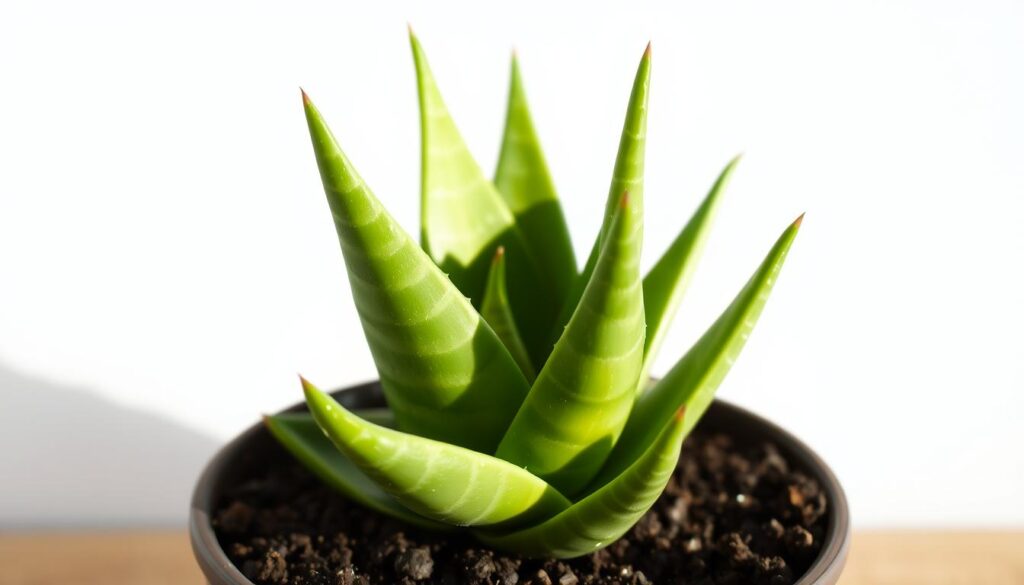
Troubleshooting Common Aloe Propagation Problems
While aloe vera is relatively easy to propagate, problems can arise if not done correctly. Understanding these potential issues can help you successfully multiply your succulents.
Why Aloe Pups Aren't Rooting
Aloe pups may fail to root due to several reasons, including overwatering, underwatering, or improper handling during separation. Ensuring the soil is well-draining and allowing the cut ends to dry before planting can significantly improve rooting success.
Common reasons for poor rooting include:
- Overwatering, which can cause the pup to rot before roots develop.
- Underwatering, which may not provide enough moisture for root growth.
- Planting too deeply, potentially causing the pup to rot.
Dealing with Rot and Fungal Issues
Rot and fungal infections are common issues in aloe propagation, often resulting from excessive moisture or poor air circulation. To mitigate these problems, it’s crucial to use a well-draining soil mix and avoid overwatering.
| Issue | Cause | Solution |
|---|---|---|
| Rot | Excessive moisture | Improve drainage, reduce watering |
| Fungal Infection | Poor air circulation, overwatering | Enhance air circulation, treat with fungicide if necessary |
Rescuing Struggling Propagated Plants
If your propagated aloe plants are struggling, assess their environment and care routine. Check for signs of overwatering or underwatering, and adjust their light exposure accordingly.
By addressing these common issues and adjusting your propagation techniques, you can improve the chances of success for your aloe vera plants.
Caring for Your Aloe Vera After Successful Propagation
The journey doesn’t end with successful propagation; your newly grown aloe vera needs proper care to thrive. After the excitement of multiplying your succulent, it’s crucial to transition into a routine that supports the healthy growth of your new plants.
Transitioning to Regular Care Routines
Once your aloe vera pups have been successfully planted, they require a period of adjustment before they can be treated like mature plants. Initially, keep the soil lightly moist, gradually increasing the intervals between waterings as the plants establish themselves.
“Aloe vera is a succulent, not a cactus,” as many enthusiasts know, but it’s often mistakenly treated as one. The key is to find that balance where the soil is not too dry or too wet. Overwatering is a common mistake; hence, it’s essential to monitor the soil moisture closely.
When and How to Repot Young Aloe Plants
Young aloe plants typically need to be repotted every year or two as they outgrow their containers. Choose a pot that is only slightly larger than the previous one, as aloe vera prefers to be slightly root-bound.
- Select a well-draining potting mix to prevent waterlogged soil.
- Gently remove the plant from its pot, taking care not to damage the roots.
- Place the aloe vera in its new pot, adding fresh soil around the roots.
Fertilizing Newly Established Plants
Fertilization is a critical step in promoting healthy growth in your newly propagated aloe vera. Use a balanced, water-soluble fertilizer during the growing season (spring and summer) to provide essential nutrients.
“Fertilizing your aloe vera plants during the growing season can significantly enhance their growth and vitality.”
By following these care routines, repotting when necessary, and fertilizing appropriately, you’ll be able to enjoy healthy, thriving aloe vera plants that continue to multiply and bring joy to your space.
Conclusion
Successfully propagating aloe vera is a rewarding experience that allows you to share these beneficial plants with others. By following the steps outlined in this guide, you’ve gained a comprehensive understanding of aloe vera propagation, from understanding the basics to caring for newly propagated plants.
A summary of aloe vera propagation involves selecting healthy pups or leaf cuttings, preparing them for planting, and providing the right conditions for rooting. To achieve successful succulent propagation tips include ensuring proper drainage, watering sparingly, and providing adequate light.
Now that you’ve successfully propagated your aloe vera, consider sharing your experience and photos on social media. Showcasing your thriving aloe plants can inspire others to try their hand at propagation, creating a community of succulent enthusiasts.
FAQ
How do I separate aloe vera pups from the mother plant?
Can I propagate aloe vera from leaf cuttings?
What is the best soil for aloe vera propagation?
How often should I water newly propagated aloe vera?
What are the ideal light conditions for newly propagated aloe vera?
Why are my aloe pups not rooting?
Can I use rooting hormone to help aloe vera propagation?
When is the best time to propagate aloe vera?
For world’s best Aloe Vera products Country Wise:
INDIA: CLICK HERE
USA: CLICK HERE
CANADA: CLICK HERE
AUSTRALIA: CLICK HERE
UNITED KINGDOM: CLICK HERE


